What varieties of pears are suitable for growing in the Moscow region?
Thanks to selection, today there is a wide variety of pear varieties, which differ in both taste and climatic conditions of growth. Since not all varieties can grow in certain climatic latitudes, the question of choosing the type of fruit tree should be approached very carefully and responsibly. In this article, we will consider varieties of pears for the Moscow region.
Content
Optimal conditions for growing pears in the Moscow region
The Moscow region is located in a certain climatic zone, which, of course, has a number of parameters. And they are not suitable for all varieties of pears. Its climatic features have a significant impact on the possibility of growing certain fruit trees in a given latitude. Thus, before purchasing seedlings, you must first familiarize yourself with the climatic features of the selected planting site. Let's consider in more detail the area of the Moscow region.
The Moscow region is located in the middle zone, which assumes the presence of hot summers and cold winters, between which there are transition periods - autumn and spring. A positive characteristic of the area is the presence of sufficient rainfall to minimize additional irrigation.
One of the fundamental points that has a decisive importance for the growth and yield of a planted pear seedling is the time and place of planting. This tree is characterized by thermophilicity and varying degrees of frost resistance when changing the place of growth (depending on the variety). Therefore, the selection of a pear variety for the Moscow region is a very important aspect, since not every variety has the necessary characteristics for maximum yield and growth duration in this area.
As you know, planting young seedlings, as well as transplanting existing mature trees, can be done both in spring and autumn. But experienced gardeners in this area are advised to carry out the above manipulations in the fall. This process is carried out in the period between the time when all the leaves on the tree have already fallen, but it is still far from the moment of the first frost.
It is recommended to plant one-year or two-year-old seedlings with a developed and strong root system in order to ensure maximum plant survival.
Freshly planted trees have tenacious and thorny branches that withstand windy weather.
In the spring, after disembarkation, the first buds will begin to bloom on the pear, which is rarely possible with a spring planting.
Planting a seedling should only be in the southwestern or southern parts of your garden plot, since this fruit tree has a high thermophilicity.
Planting holes should be prepared about a week before planting. Its dimensions should be 60x60x60 cm. The bottom of the pit is loose and we add rotted manure (it should not be fresh, otherwise the seedling may dry out), wood ash and phosphorus-potassium fertilizers.
Around the planted plant, we form an earthen roller, which will positively affect the preservation of moisture for a longer time after watering. After watering, we mulch the soil with hay, straw, sawdust or leaves. This technique will help the seedling calmly endure possible sudden temperature jumps, which is very typical for the Moscow region. It will also reduce the risk of developing weeds.
In such rather harsh climatic conditions, it is very problematic to grow most varieties of pears.But thanks to the work of breeders, varieties have appeared that are suitable for such climatic conditions.
Video "Planting pears in the middle lane"
The key to good fruiting and healthy growth of a tree is its correct planting, which will be discussed in this video.
Summer varieties
Summer pear varieties are the earliest. Their fruits begin to ripen closer to August. But a significant disadvantage of such trees is the poor preservation of fruits. Therefore, they must either be eaten immediately, or preserved (preserves, compotes, jams).
The most suitable summer varieties of pears for the Moscow region are:
- Lada. It is considered one of the earliest summer varieties. It tolerates winter and drought well. Has great resistance to fungal diseases. Outwardly, it is a medium-sized tree with a pyramidal crown. Fruits weighing up to 150 g and yellowish with a reddish blurred blush. Their taste is sweet and sour. Pears are rich in P-active substances and fructose. Fruiting begins 3 or 4 years after planting. The harvest is stable. The variety is weakly prone to scab;
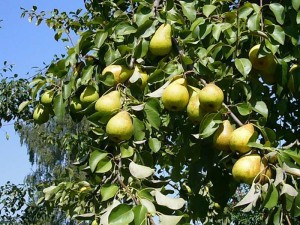
- Prominent or Lumpy. It is considered a late summer variety. Fruit ripening occurs in early September. Possesses high winter hardiness and resistance to fungal infections. Pears have a yellowish-green hue, which, when ripe, acquires orange streaks. The fruits are rough and uneven. They do not ripen at the same time. Pears can be stored on the tree as they sit firmly on the branches, but are very poorly transported. The tree bears fruit in its fifth year;
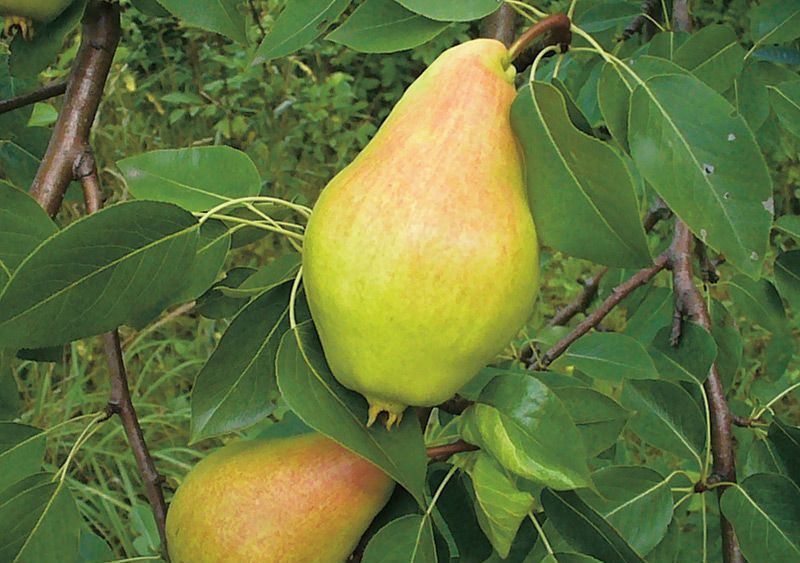
- Chizhovskaya. Late summer variety. Good resistance to frost and certain diseases. Fruiting begins in the third year. Pears are pink in color. The taste is sweet and sour. The variety is self-fertile;
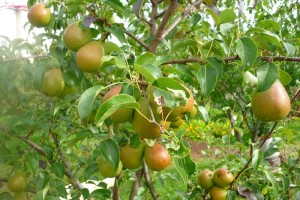
- Tenderness. Pears ripen by September. They are greenish and red. They are quite large in size - up to 200 g. The yield is quite high. Its fruits are stored for a long time at zero temperature;
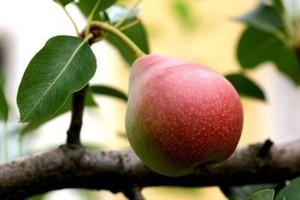
- Cathedral. It is a mid-summer variety. Very popular in the Moscow region. The fruits are medium, their weight is about 100 g. They ripen in early August. The taste is sour with a sweetish aftertaste. Fruit ripening is fast. Low susceptibility to disease and frost.
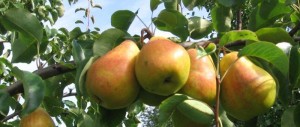
Autumn varieties
In addition to varieties that ripen in summer, there are a number of varieties of pears that bear fruit in the fall and can grow in the Moscow region.
Autumn varieties that can grow in this area include:
- Muscovite. It is considered an early autumn species. The tree is small in size, but rather powerful skeletal branches are characteristic. The fruits are well stored and transported. Pears from the branches do not crumble. They are light yellow in color with green blotches. The pulp of pears is juicy and has a pronounced aroma. The fruits ripen quickly;
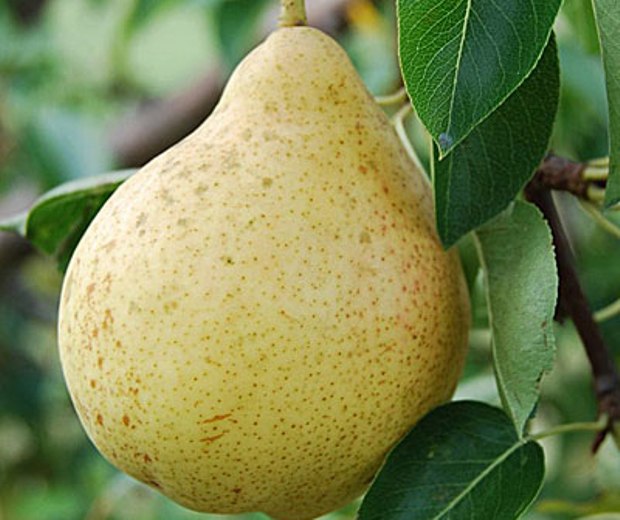
- Favorite of Yakovlev. Trees bear fruit since the fifth year. The yield is increasing every year. The color of the fruit is a mixture of yellow and green. They have a sweet-sour taste with a quince aroma. Astringency is absent. They ripen in mid-September;

- Fabulous. The trees are tall. The fruits are rather large and weigh 250 g. The taste is pleasant. Their color is greenish with a yellow tint. Stored for two weeks. Mashed potatoes and juices are made from them. This variety is resistant to scab and gall mites;
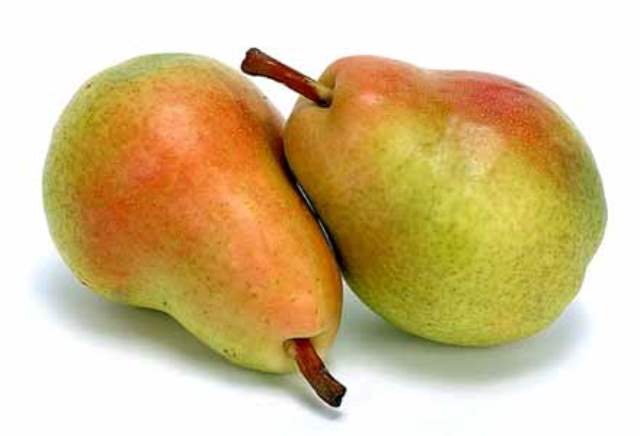
- Columnar pear. In the area of the Moscow region, early autumn or late autumn varieties are usually planted, which are characterized by average winter hardiness. Late autumn species are greenish with orange splashes. Fruits can reach up to 200 g in mass. The taste is pleasant. Early autumn species have wide fruits, the weight of which can reach 300 g. Pears are very juicy and aromatic;
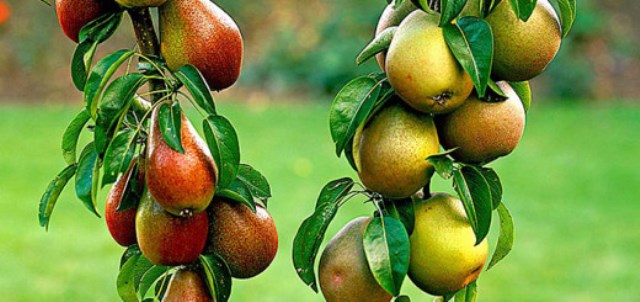
- Elegant Efimova. The variety is very productive and has a high winter hardiness. The appearance of the fruit is very beautiful. Pears are red-green in color. The crop should be harvested in a timely manner, otherwise they quickly overripe.Fruits can ripen at the end of August or throughout September;

- Vera Yellow. Fruit ripening occurs in the last days of September. High winter hardiness is characteristic. The harvest begins from the sixth year. There are peaks and drops in yields. Fruits are small, up to 170 g.
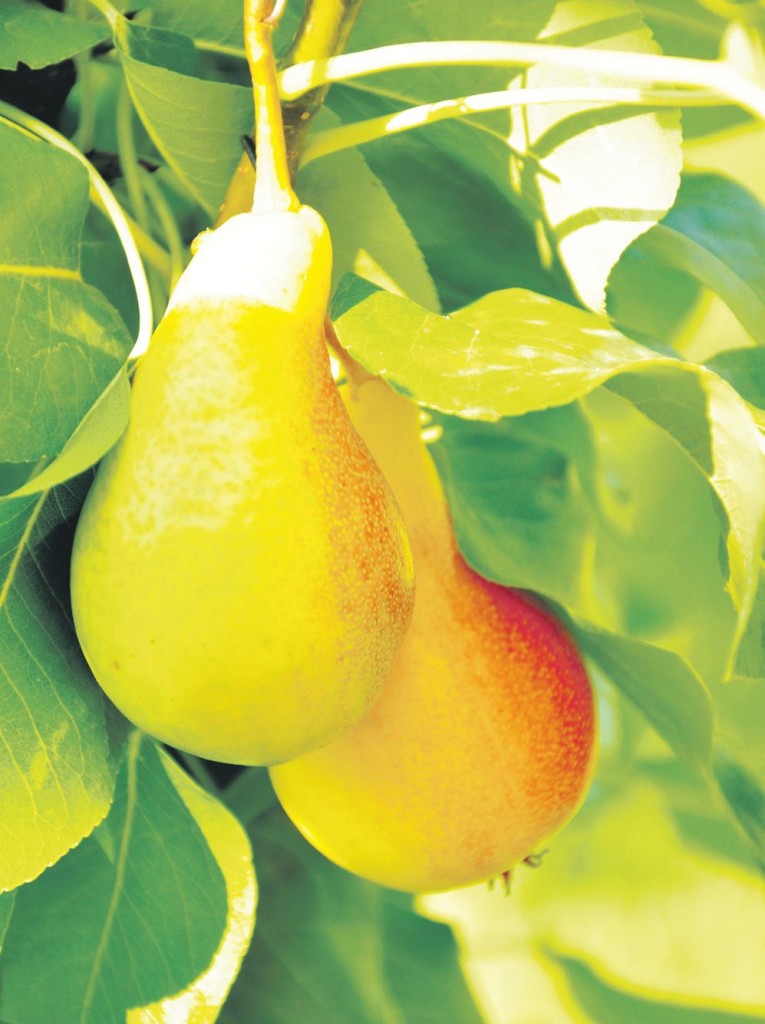
As you can see, in such a rather harsh climatic zone, in which the Moscow region is located, you can grow a large number of varieties of our beloved pear.
